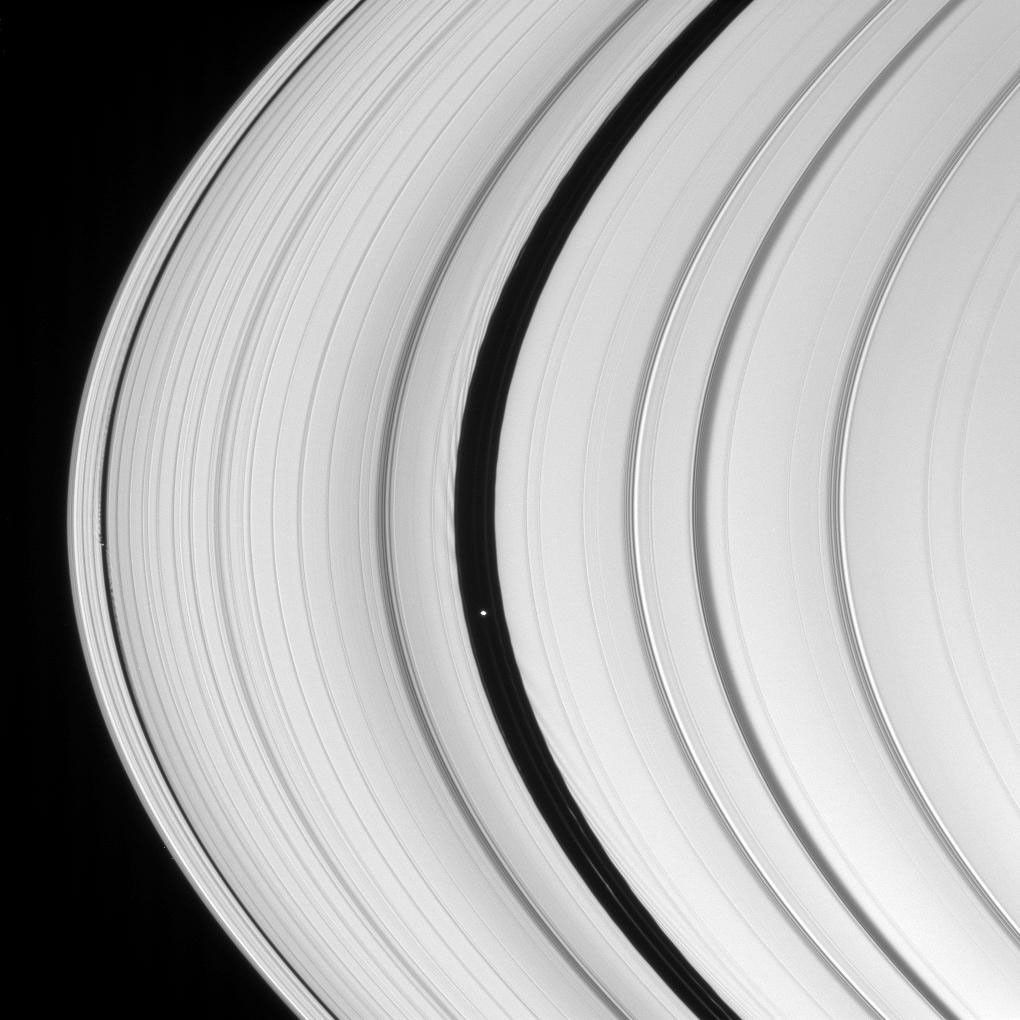Daphnis and Pan
| PIA Number | PIA09812 |
|---|---|
| Language |
|
Saturn's two ring-embedded moons are pictured here, along with clearly visible signs of their perturbing effects on the ring edges that border the gaps they inhabit.
These ripples along the ring edges arise when the perturbing moon passes by, creating leading wakes in the faster moving ring material interior to the moon and trailing wakes as it passes the slower moving ring material beyond the moon. Being larger than Daphnis, Pan creates correspondingly larger wakes.
Daphnis (7 kilometers, or 4.3 miles across) is seen in the Keeler Gap at left, and Pan (26 kilometers, or 16 miles across) appears near center in the Encke Gap.
This view looks toward the unilluminated side of the rings from about 10 degrees above the ringplane. The image was taken in visible light with the Cassini spacecraft narrow-angle camera on Dec. 1, 2007. The view was acquired at a distance of approximately 1.3 million kilometers (819,000 miles) from Saturn. Image scale is 8 kilometers (5 miles) per pixel.
The Cassini-Huygens mission is a cooperative project of NASA, the European Space Agency and the Italian Space Agency. The Jet Propulsion Laboratory, a division of the California Institute of Technology in Pasadena, manages the mission for NASA's Science Mission Directorate, Washington, D.C. The Cassini orbiter and its two onboard cameras were designed, developed and assembled at JPL. The imaging operations center is based at the Space Science Institute in Boulder, Colo.
For more information about the Cassini-Huygens mission visit http://saturn.jpl.nasa.gov . The Cassini imaging team homepage is at http://ciclops.org .
Credit: NASA/JPL/Space Science Institute



























